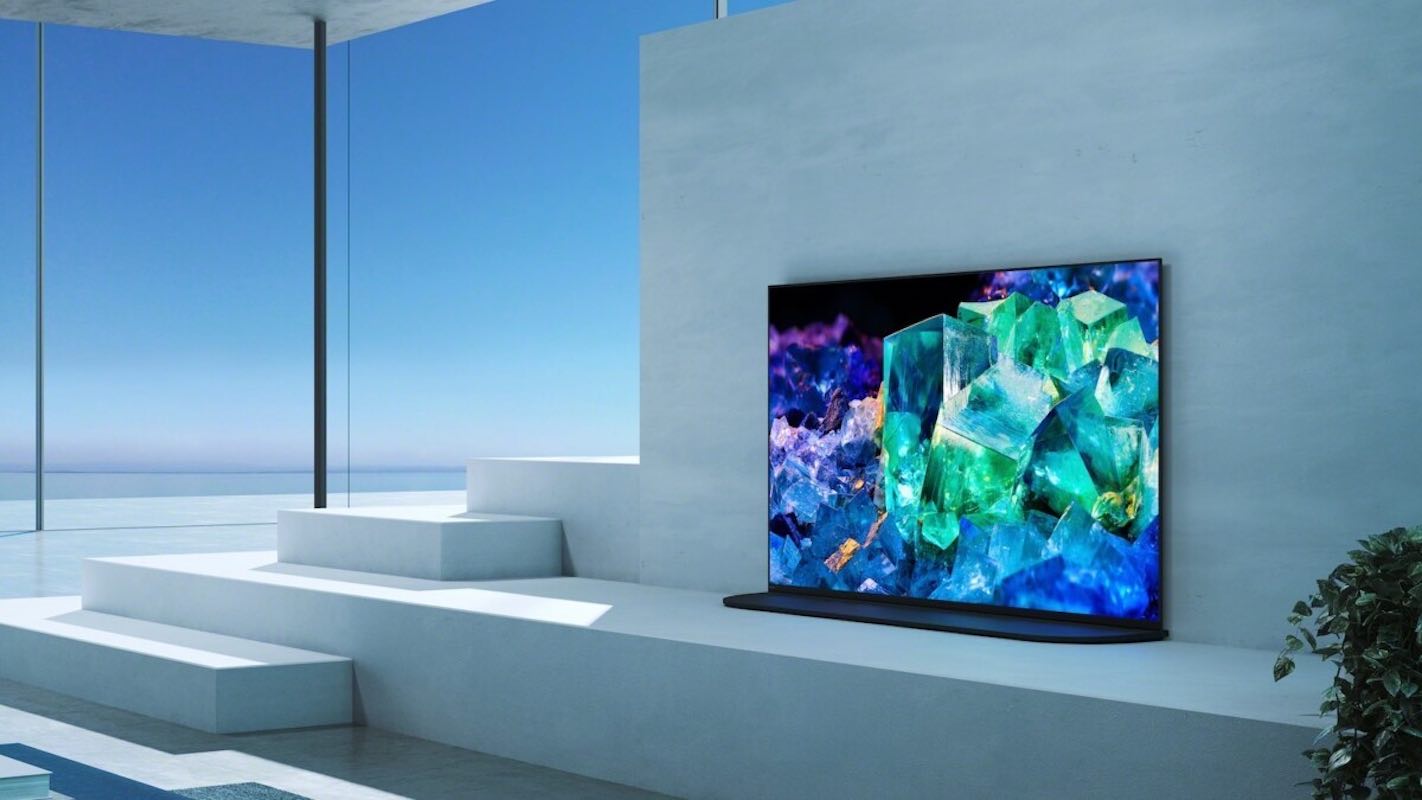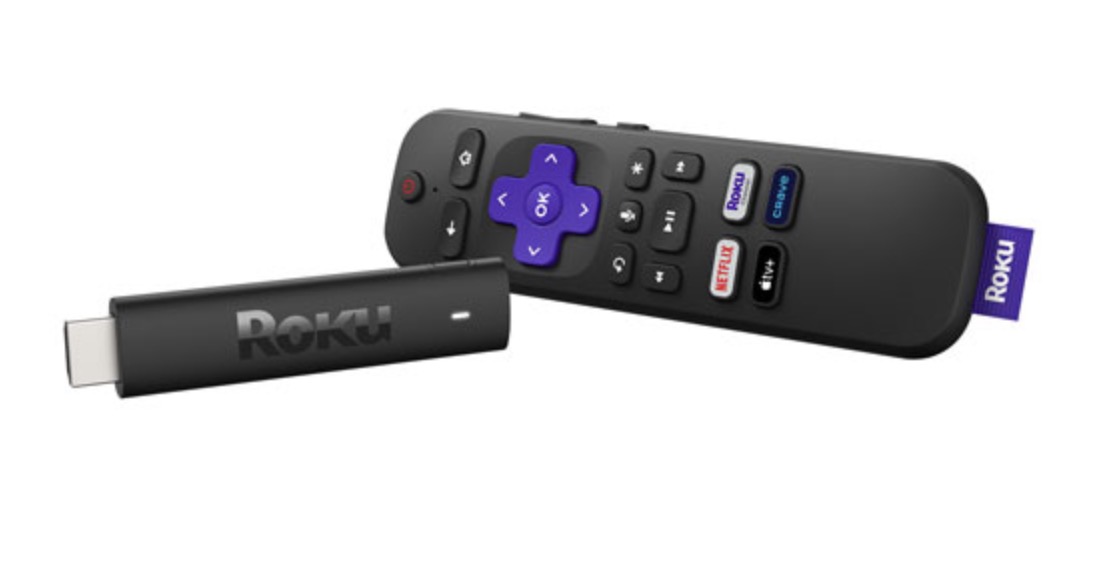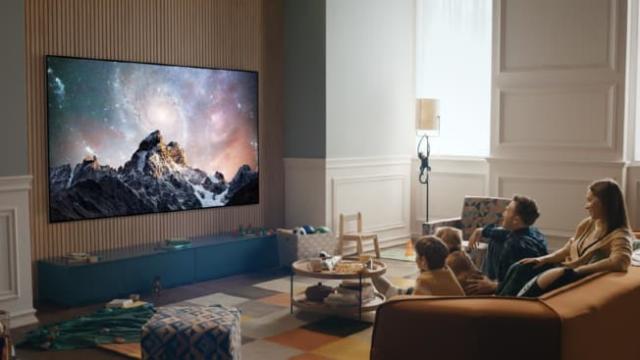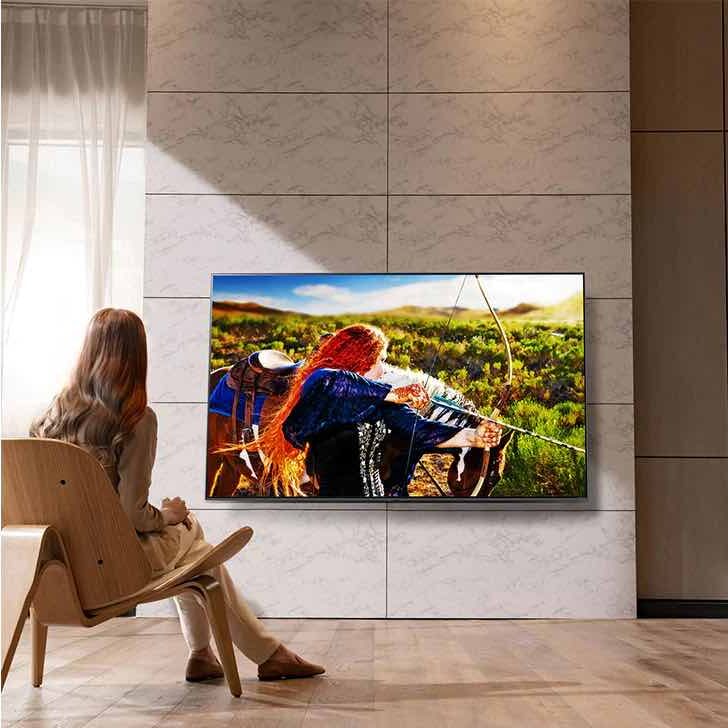
One of the best parts of the latest television tech is how we have so many options when choosing a new TV. The big brands are offering new models of OLED, Mini-LED, QLED, and QD-OLED TVs, and each brand has its own unique features. If you’re looking for a new TV, here’s a quick look at the new TV tech you’ll find this year.
The evolution of 4K television

While you can still find 1080p Full HD televisions, 4K resolution is now the standard. It’s not the highest resolution you can find on a TV today. There are a growing number of 8K TVs available, but 4K is the resolution with the most amount of content available online.
4K has more pixels so it offers four times the resolution of Full 1080p HD. Even in screens that are 65 inches, 75 inches, and larger, 4K gives you a sharp, clear picture that’s so real to life that it’s almost like looking out a window.
What type of content can you stream in 4K
4K is now available on most streaming platforms, gaming consoles, and movie rentals. The cost of 4K streaming content may vary from platform to platform, but you’ll often find it costs a few dollars extra to ensure your stream is always 4K.
You can find 4K media streaming devices from Roku, Apple TV, Google Chromecast, and others. The latest 4K smart TVs include the most popular streaming apps within the TV’s operating system, but you can also add a media streaming device to your TV if you like to switch between operating systems. I’m a big fan of Apple TV, so I switch between my Roku operating system and my 4K Apple TV.
Features on 4K TVs
The latest 4K televisions are available with OLED, Mini-LED, QLED, and LED backlights. Most are labelled as 4K Ultra HD or UHD, and most new 4K TVs are also smart TVs. They can support 4K HDR content, and they have features designed for gaming consoles including 120Hz refresh rates, VRR, and auto-HDR to adjust your TV for the game you’re playing. You can read more about the features available on 4K TVs in the 4K TV buying guide.
Size range of 4K TVs
4K TVs are available in a variety of sizes, from small 32-inch 4K televisions to large 85-inch or 100-inch TVs. Your best option when choosing a new 4K TV is to choose the largest TV you can comfortably fit in your space. You can learn more about measuring your TV in the TV buying guide.
Typical Cost of 4K TVs
Since their initial release, 4K TVs have dropped in price. Depending on your chosen brand, you can find a 55-inch 4K TV with LED backlight for less than $500. You’ll find the price increases depending on what type of technology is built into the TV or what type of backlight the TV uses.
How to choose a 4K television
If you haven’t upgraded your 1080p LED television yet, one of the best ways to see the difference between Full HD and 4K resolution is to head into your local Best Buy and take a look at both TVs. The difference will be surprising, and you’ll also see a difference between the picture quality on a 4K LED TV vs a 4K QLED TV with Mini-LED backlight.
Is 4K Future-Proof?
While 8K content is slowly becoming more available on platforms like YouTube, 4K is here to stay. Most streaming platforms are just beginning to add 4K streaming as an option, so there will be new 4K content for you to enjoy for years to come.
The latest in OLED televisons

OLED stands for organic light emitting diode. These diodes are made of organic compounds and can produce their own light so they don’t require an additional backlight like other types of TV. Each pixel has the power to turn off or on individually so an OLED television can produce brilliant, bright colours, pure whites, and true black. You can read more about the differences between OLED, LED, and LCD in this article.
One of the concerns people used to have with OLED TVs is, because the diodes are organic in nature, there is a slight chance they could cause something called ‘burn in’ on the screen. It was a rare occurrence when OLED first came out, but it’s even less likely now because the latest OLED TVs are designed with technology to prevent it. They can detect any on-screen objects that could burn in and will automatically adjust their brightness to prevent any issues. Some new OLED TVs also have the technology to refresh the pixels when the TV is used for several hours in a row or left on overnight.
QD-OLEDs have arrived
OLED TVs have spectacular colour and contrast on their own, but this past year Samsung took OLED tech a step further to create the first QD-OLED. By adding a layer of quantum dots over an OLED backlight, they created a TV that’s so bright and colourful it’s like looking out a window.
Size range of OLED TVs
OLED TVs have always been available in larger sizes of 55 inches and up, and recently smaller OLEDs have been released in a smaller size of 42 inches. One of the best parts of choosing an OLED is how thin they are. The latest models have the components built into one small area on the TV, so the screen itself is only a few millimetres thick.
Typical Cost of OLED TVs
OLED TVs are a significant investment, but they are a very worthwhile one. Depending on the size you choose, this type of television will range in price from about $1500 and up.
Is OLED future-proof?
OLED is currently the thinnest, highest-quality TV you can find right now. The next technology that will be able to rival the picture quality of an OLED will be MicroLED. MicroLED uses non-organic pixels to light the TV, and when this TV tech is available in sizes to fit your living room, it will definitely be a contender with OLED for the best possible TV. You can read more about MicroLED in this article.
The latest in Mini-LED and QLED televisions

Mini-LED has evolved over the past few years and the big brands are each putting their own spin on it. The latest TVs with Mini-LED backlight use thousands and thousands of mini LED bulbs and dimming zones to light the TV. Because they are so small there is less likelihood of your TV ‘bleeding’ colour or light when the picture should be dark. Thanks to this new technology, Mini-LED TVs can achieve deep, rich black tones and ultra-bright colours.
A QLED TV with a Mini-LED backlight has a layer of quantum dots placed over the LCD panel. Quantum dots add increased brightness and colour to the TV, so a QLED TV will have better picture quality than an LED TV. Mini-LED and QLED can also reach peak colour volume, so in that area, they are superior to OLED. They are also much brighter than OLED TVs, so may be a better choice than OLED if you have a room that’s very bright during the daytime.
Size range of Mini-LED TVs
When you’re choosing a Mini-LED television, it’s always better to choose the biggest TV that you can comfortably fit in your room. You can find Mini-LED TVs and QLED TVs in sizes starting from 55 inches and up.
Cost of Mini-LED and QLED TVs
Although these TVs are packed with new technology and have spectacular picture quality, they aren’t as expensive as OLED televisions. You can find a QLED TV from brands like TCL for less than $1000. Take a look at this article on Mini-LED to find out more about this type of TV technology.
New television buying tips
The best way to shop for a new TV this year is to find out how much you’d like to budget for your new television, decide how large of a TV you’d like, and tick off any specific features you’d like your TV to have. Be sure to watch for TVs on sale too, as you’ll find a wide variety of all types of TVs listed for a reduced price.
The new TVs for this year are being released right now. Be sure to watch Best Buy for the latest models in OLED, Mini-LED, and QLED TVs.




I’m looking to purchase the SONY XBR-55X900E TV in Canada. However I plan to take the TV to Asia when I move for work. I understand from Sony there are two power versions of the TV available – AC 110-240V, 50/60Hz and (USA / Canada AC 120V, 60Hz). Can I purchase the dual power version AC 110-240V, 50/60Hz in Canada Best Buy (Calgary)
Hi @Mash D,
Here is the response from SONY: Power will work in Asia.
The bigger issue is North American TV’s are designed to be used on the NTSC video system, while in Asia they use the PAL video system. Unfortunately, no TV we sell is able to work for both system and there is no way to convert the TV. That is why in Europe and Asia we have different model numbers.
Short answer, even if the TV power will work, it will be incompatible with all video sources including cable, antenna, blu-ray, gaming consoles, etc.
Comments are closed.